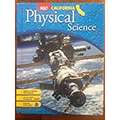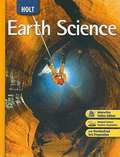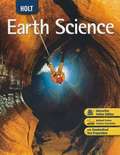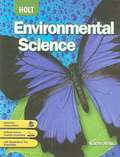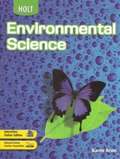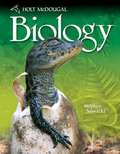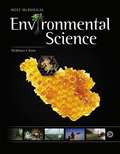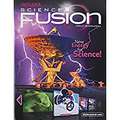- Table View
- List View
Holt Chemistry (California Edition)
by Salvatore Tocci R. Thomas Myers Keith B. OldhamHolt Chemistry California is in line with California test standards. In this book you will see three things: what the standard actually says, what it means, and an explanation to help you understand it.
Holt Chemistry New York: The Physical Setting
by Salvatore Tocci R. Thomas Myers Keith B. OldhamChemistry text book New York edition.
Holt Earth Science
by Jay M. Pasachoff Mead A. Allison Arthur T. DegatetanoThis text book on Earth Science contains unit lessons on Studying the Earth, Composition of the Earth, History of the Earth, The Dynamic Earth, Reshaping the Crust, Oceans, Atmospheric Forces and Space. Chapter Labs, Quick Labs, Maps in Action, Feature Articles are some of the additional features.
Holt Earth Science (California Edition)
by Jay M. Pasachoff Mead A. Allison Arthur T. DegatetanoThe book contains unit lessons on Studying the Earth, Composition of the Earth, History of the Earth, the dynamic Earth, reshaping the crust, Oceans, Atmospheric Forces, and Space.
Holt Earth Science (California Edition)
by Holt Rinehart Winston StaffHolt Science California Grade 6 Earth organizes knowledge on the world we live in. Each chapter involves the learners taking them step by step through the exploration of science
Holt Earth Science, Interactive Reader and Study Guide (California Edition)
by Holt Rinehart WinstonThis book is all about the earth, its formation, composition, features and much more.
Holt Earth Science: The Physical Setting (Grade 10, New York Edition)
by Jay M. Pasachoff Mead A. Allison Arthur T. DegatetanoThe book contains unit lessons on Studying the Earth, Composition of the Earth, History of the Earth, the dynamic Earth, reshaping the crust, Oceans, Atmospheric Forces, and Space.
Holt Environmental Science
by Karen ArmsThis latest edition integrates Karen Arms' exceptional writing style with a solutions-oriented approach to emphasize the human and ecological implications of environmental problems. Many new features are included in this second edition, including "Equal Time" boxes and the latest environmental information.
Holt Environmental Science
by Karen ArmsThis book is written with a solutions-oriented approach to emphasise the human and ecological implications of environmental problems.
Holt Environmental Science (2nd edition)
by Karen ArmsThis latest edition integrates Karen Arms' exceptional writing style with a solutions-oriented approach to emphasize the human and ecological implications of environmental problems. Many new features are included in this second edition, including "Equal Time" boxes and the latest environmental information.
Holt Environmental Science (Florida Edition)
by Karen ArmsThis text satisfies our curiosity on the environment; why things are the way they are, and how the things are the happen the way they do. it challenges every individual to learn, acquire knowledge, and understand the world we live in
Holt Life Science
by Patricia A. Watkins Glenn K. LetoTopics covered in this book include: our fragile environment, studying living things, plants, animals, the human body.
Holt McDougal Biology (Tennessee Edition)
by Holt Rinehart WinstonA Biology book set in accordance with Tennessee learning standards.
Holt McDougal Environmental Science
by Holt McdougalExplore the world around you with pages of colorful photos, helpful illustrations, exciting Case Studies, and hands on activities using everyday materials. Learn how environmental science concepts are connected to your everyday life.
Holt McDougal Physics: Student Edition 2012 (Holt McDougal Physics Series)
by Holt McDougalHolt McDougal Physics, Student Edition 2012
Holt McDougal Science Fusion (Indiana Grade 6 2012 Edition)
by Houghton Mifflin HarcourtScience Fusion Indiana Interactive Worktext Grade 6
